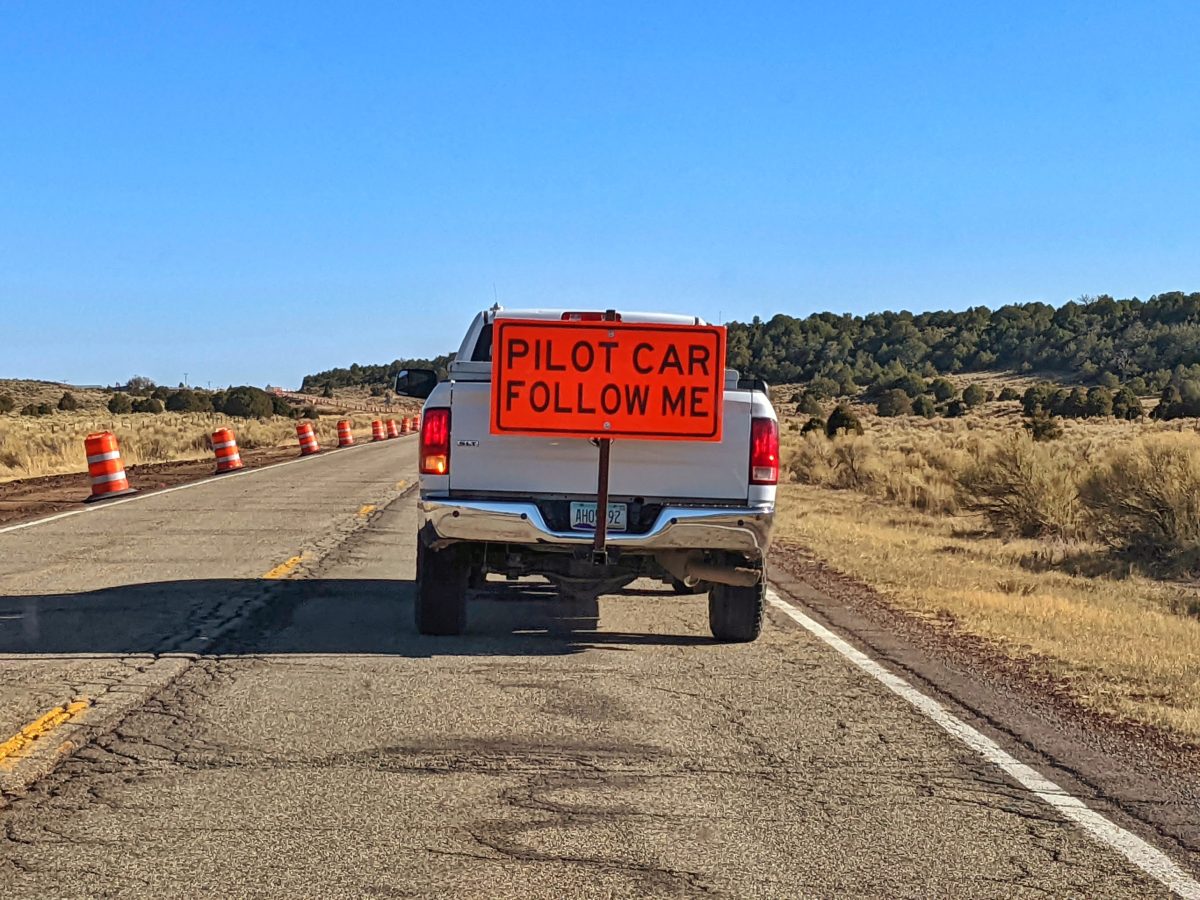Having departed Colorado Springs, we headed down to Pueblo, Colorado for our next couple of checkpoints. Today’s rally theme is “Train-ing Day,” and the first Pueblo checkpoint was interesting due to the experimental trains tucked away in a yard at the Pueblo Railway Foundation. These trains were designed to travel at speeds of up to 300 miles per hour, using either an air cushion or electromanegtics to make the trains hover above their tracks.
This is the UTACV–Urban Tracked Air Cushion Vehicle, developed by Rohr Industries (who licensed the Aérotrain technology from France) as a prototype for urban mass transit applications in the US.
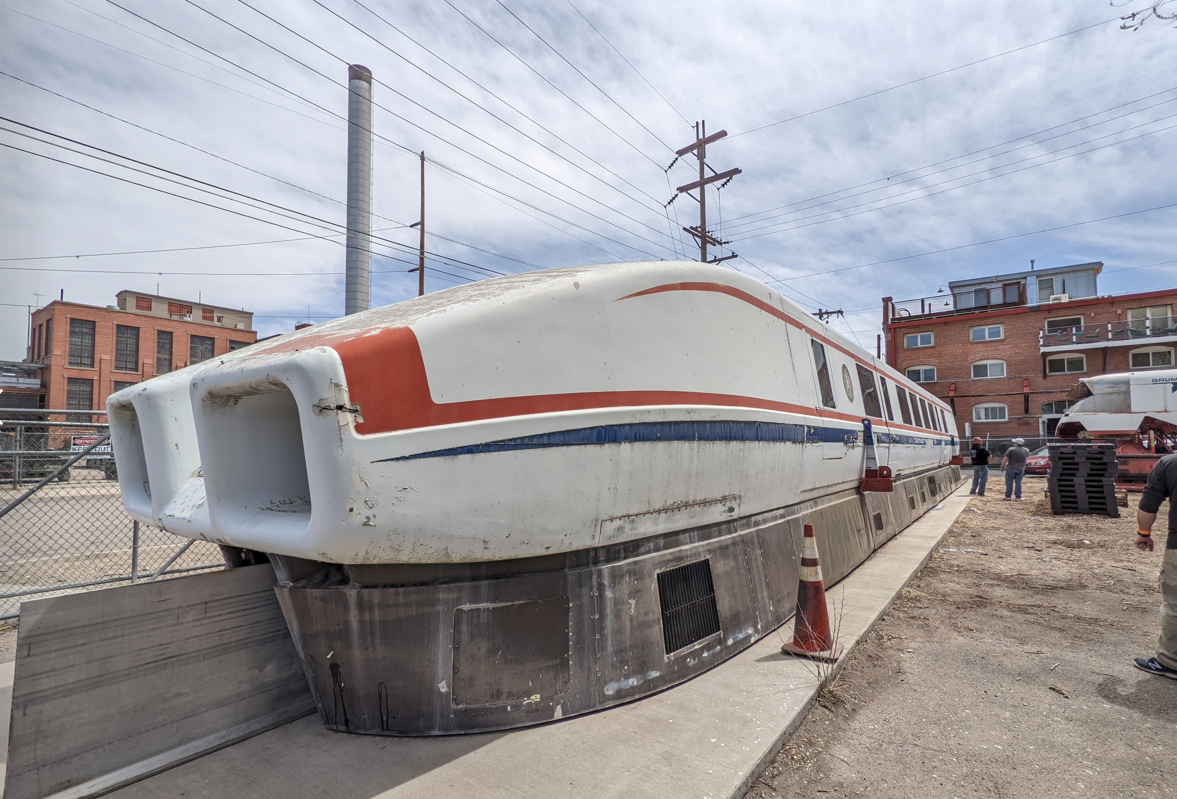
The following is the LIMRV–Linear Induction Motor Research Vehicle, built by Garrett.
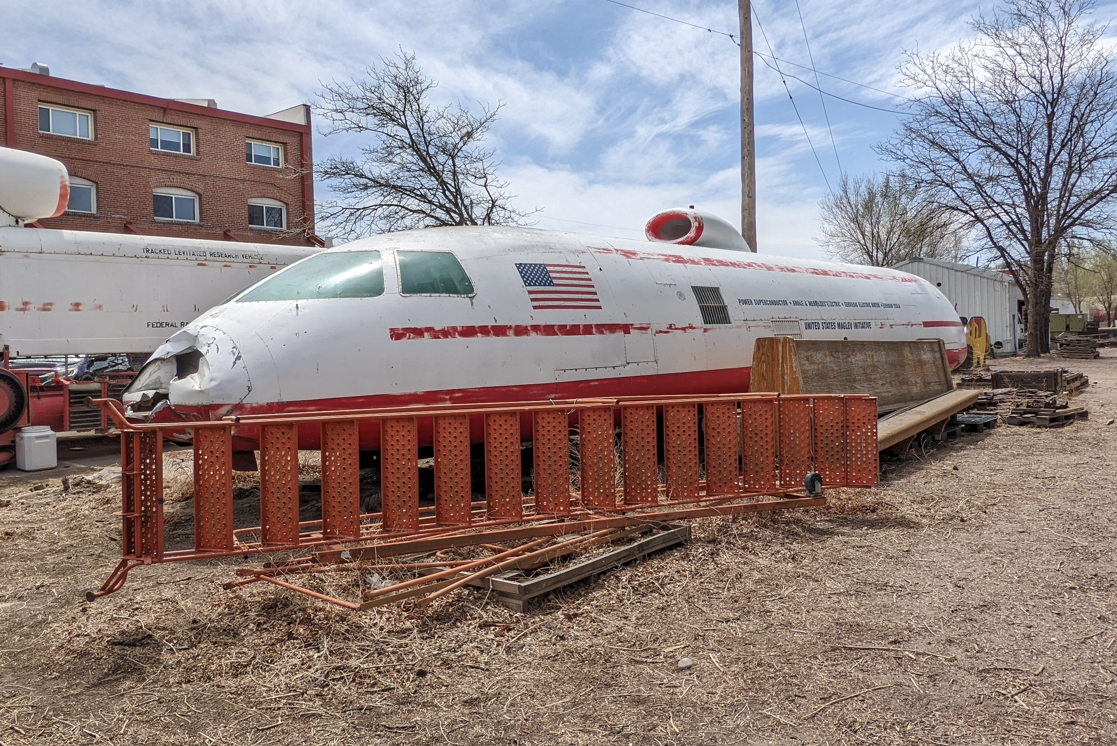
This is Grumman’s TLRV–Tracked Levitated Research Vehicle:
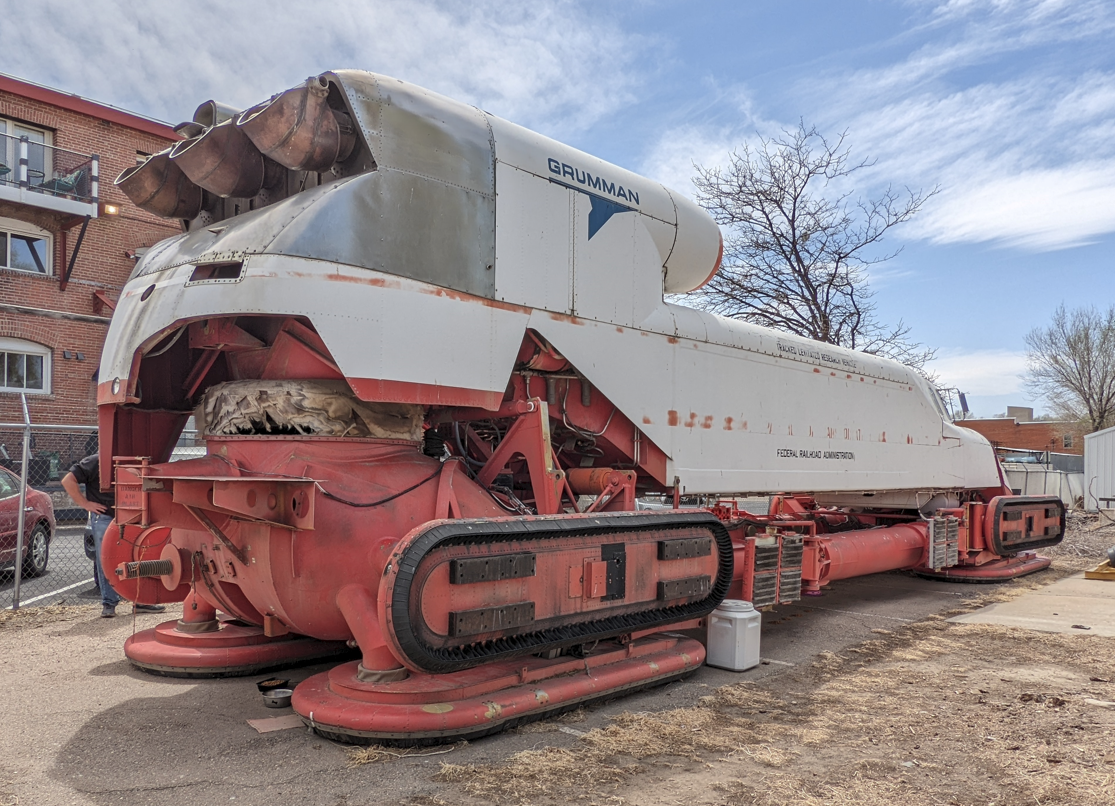
All three of these ran at testing facilities near Pueblo, but ultimately, none of these levitated trains ever got the go-ahead, and the prototypes are all that remain of the experiments.
Our next checpoint was to locate The Rood Candy Company. The candymaker no longer exists but the historic building, built in 1909, has been converted to apartments. It is Lemons Rally tradition to find a checkpoint bearing the name Rood for one of the rally’s organizers, Eric Rood.
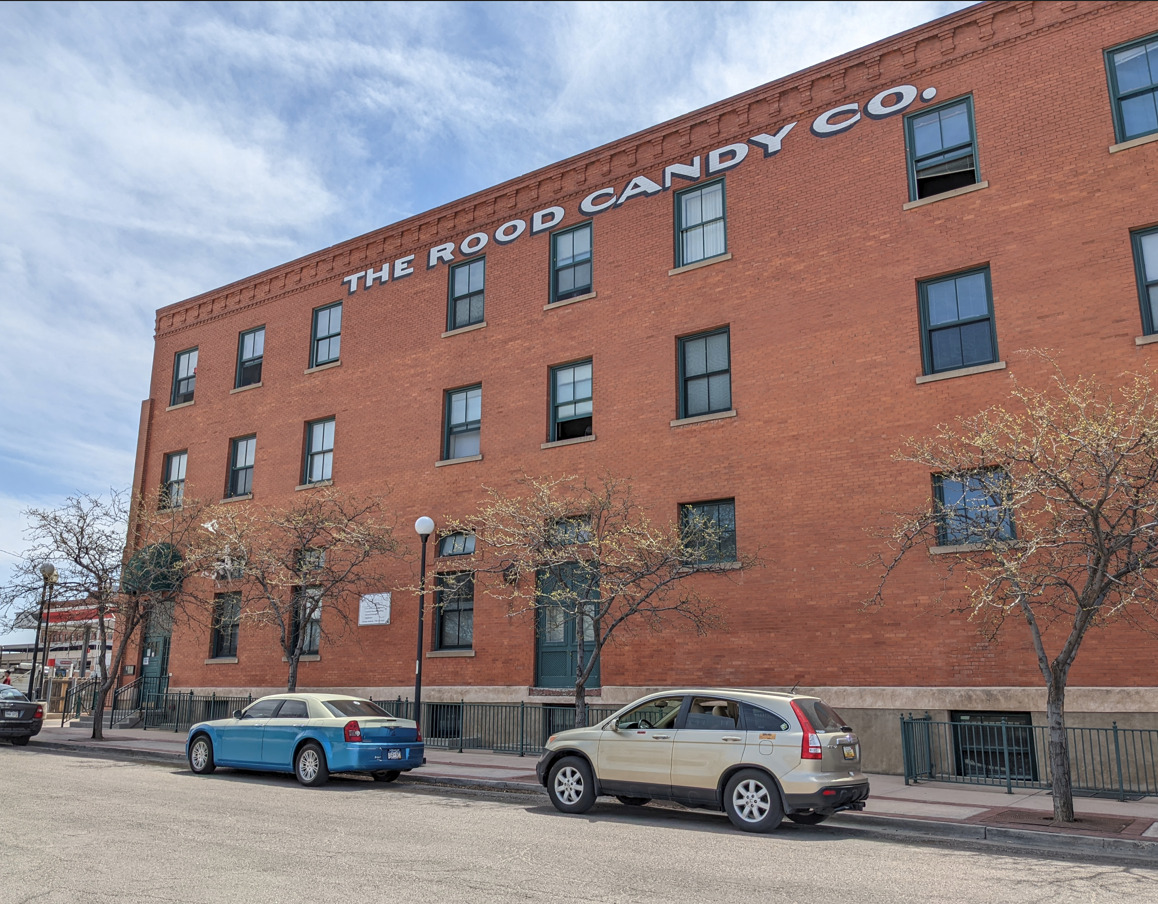
We had to travel a bit to get to our next destination–Alamosa, Colorado, where we were directed to locate the Denver & Rio Grande Western Locomotive #169. This narrow gauge locomotive was built in 1883, operated for over 56 years, and its restoration is an ongoing process.
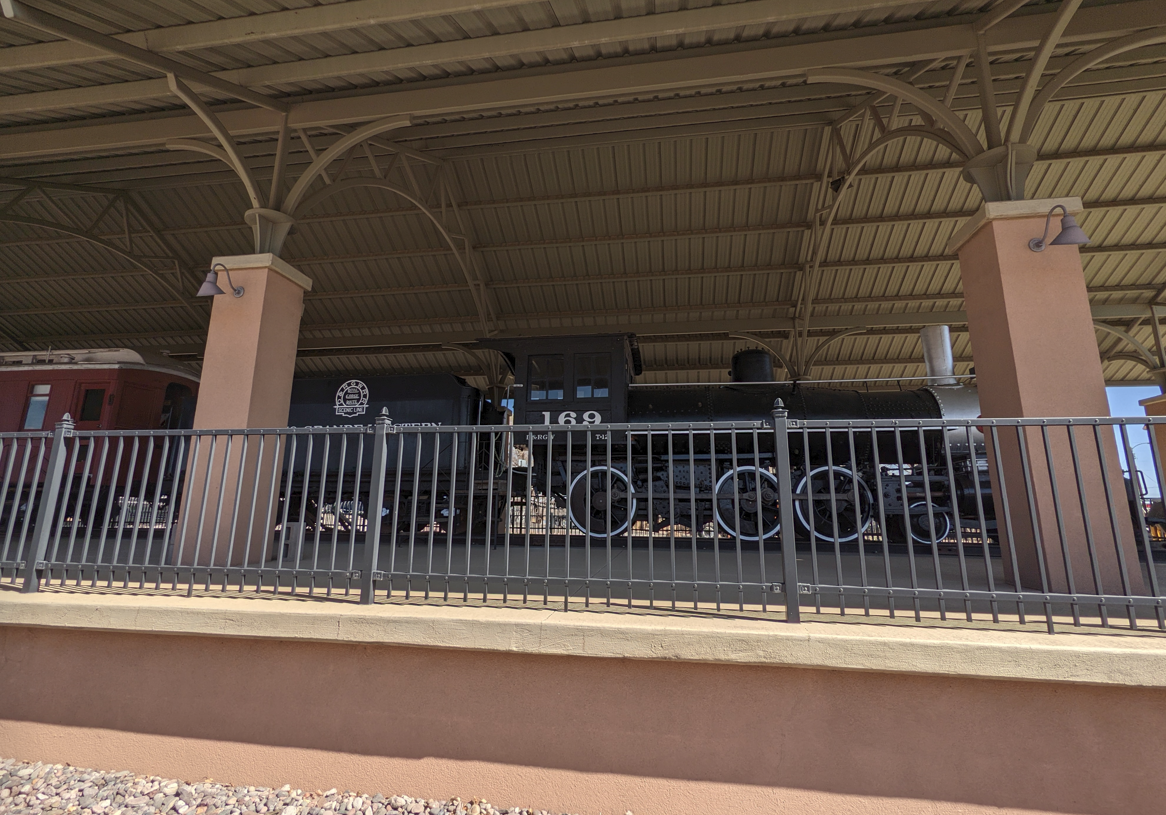
We would often cross paths with fellow rally participants, with this checkpoint being no exception.
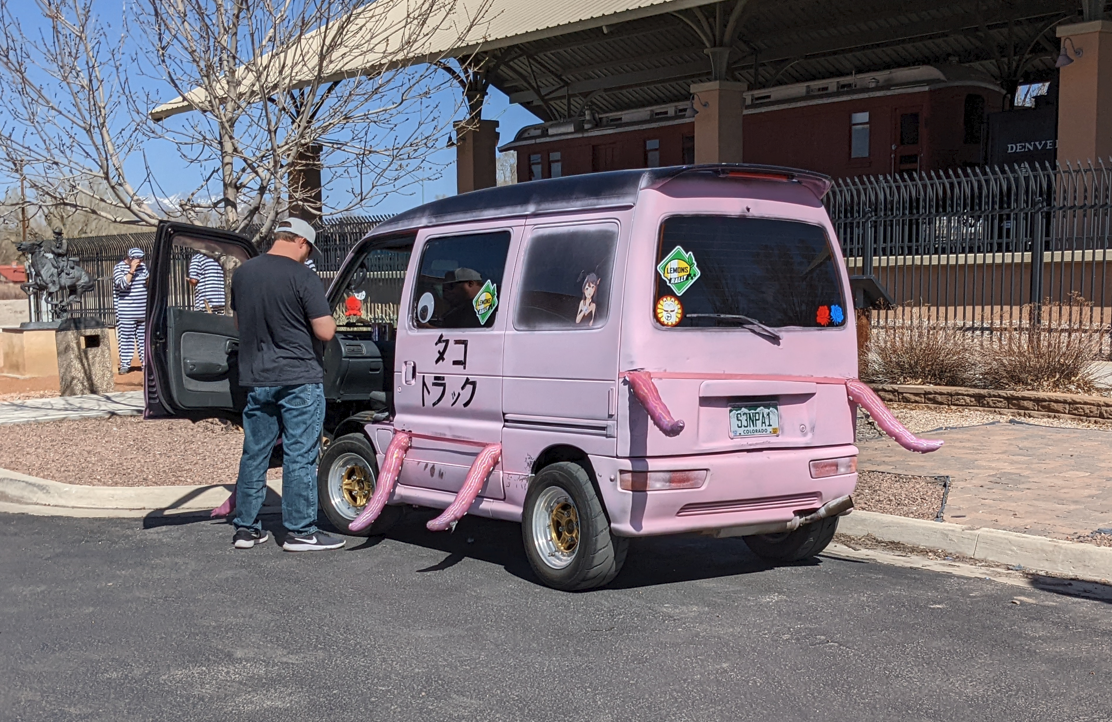
Next stop was Antonito, Colorado, where our checkpoint was the Denver & Rio Grande Western Locomotive #494, which is located at the home of the Cumbres & Toltec Scenic Railroad, a functional historic landmark that lets visitors travel 64 miles by steam train.
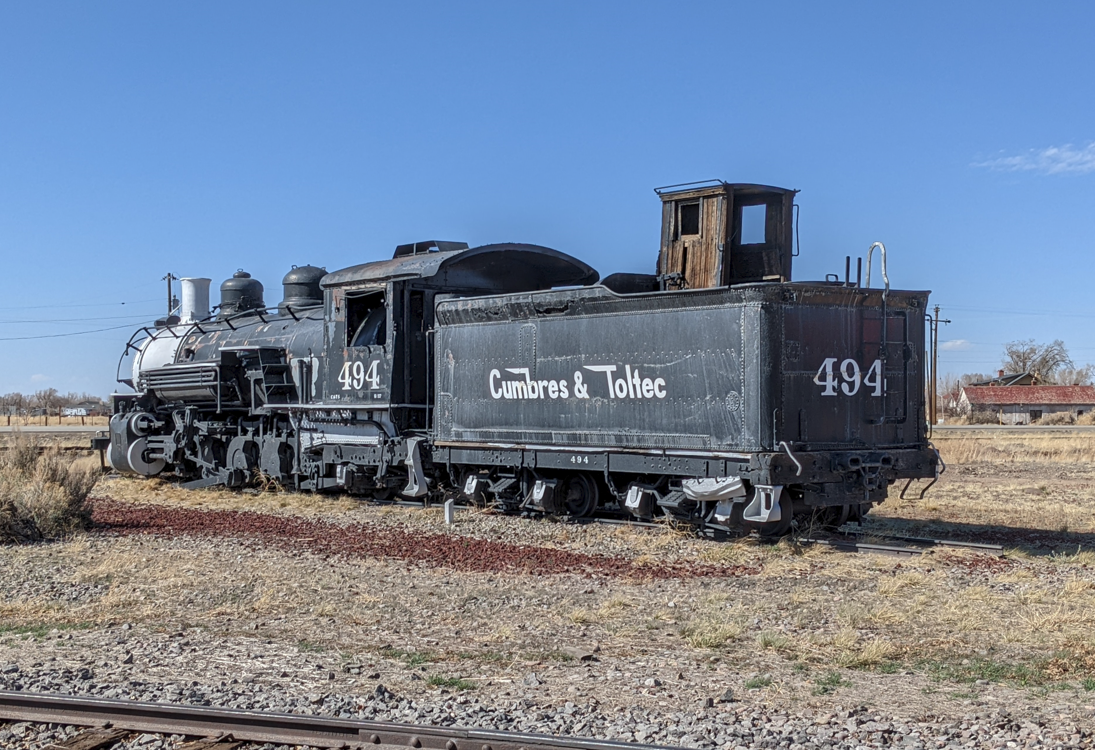
Also in Antonito are a few railroad murals, and the checkpoint was to locate one of the murals. This one was on the building adjacent to the Steam Train Hotel on US-285.
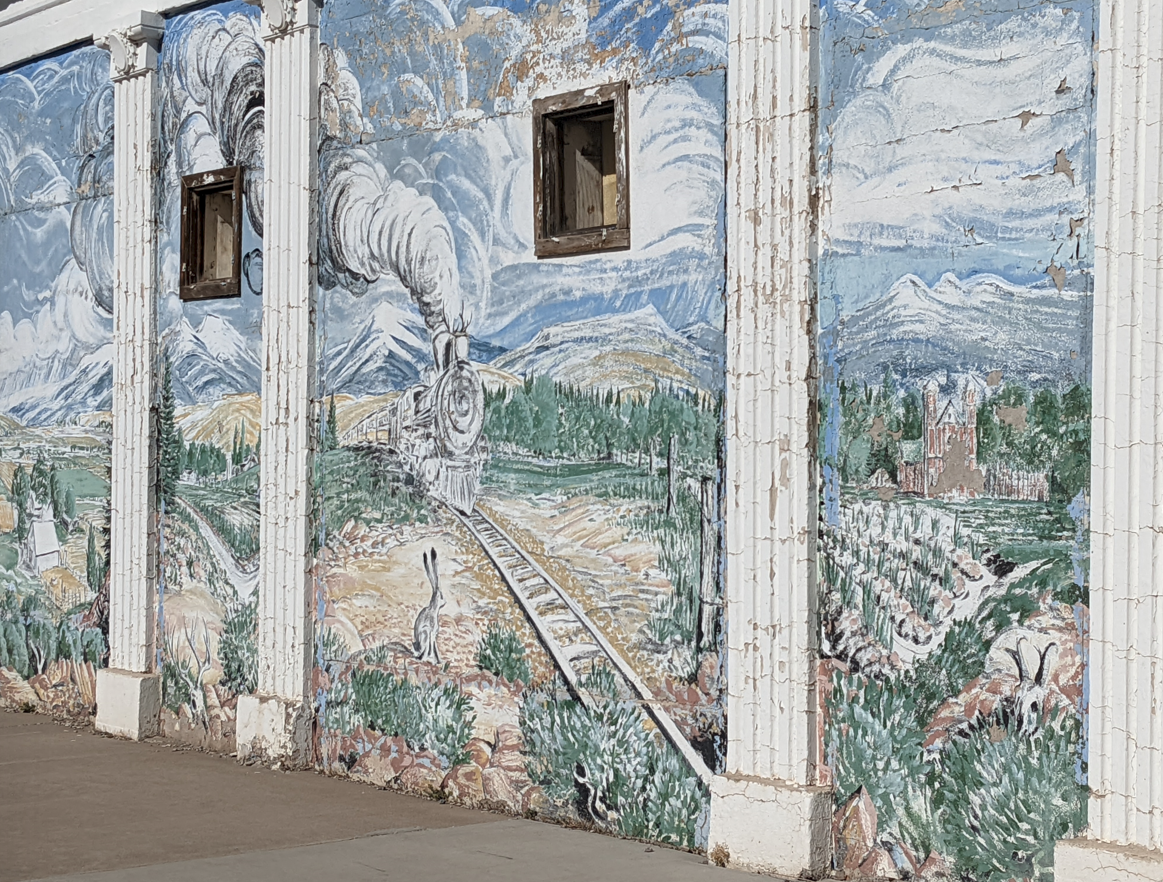
Done here, it was time to cross into New Mexico. We made good time down US-285 until…
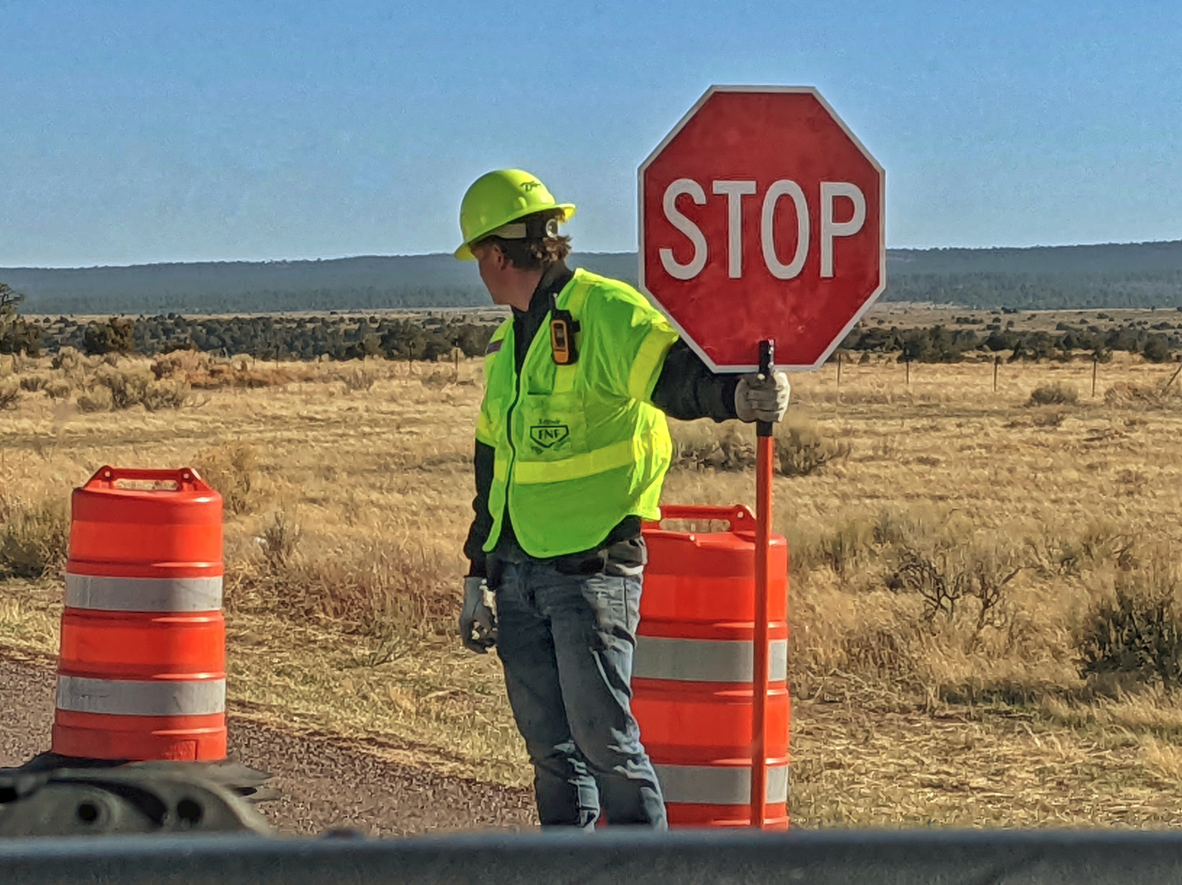
Quite a delay–it had to be at least 10-15 minutes, due to a seven mile construction zone reduced to one lane of traffic, slowly led in each direction by a pilot car. I was the first car at the stop; a few of the other rally cars were somewhere behind me in the long line of traffic.
En route to our evening destination, we had to locate the Tres Piedras Railroad Water Tower (also known as the Denver & Rio Grande Western Railroad Water Tower), in Tres Piedras, New Mexico. Thankfully it was visible from US-285, so this was one of the quick “photograph and run” stops.
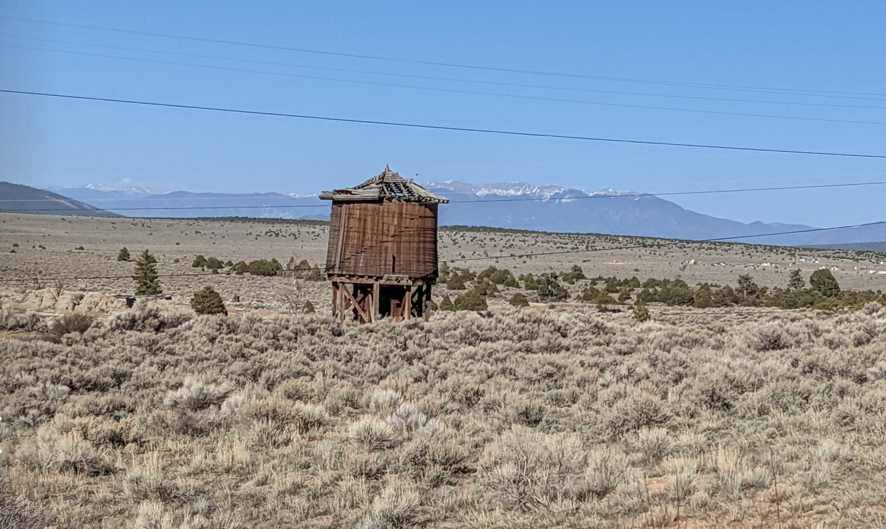
Our next stop was Santa Fe, where we had to find a really old church. How old? The oldest in the USA. The San Miguel Chapel was built between 1610 and 1626 by Tlaxcalan Indians from Mexico under the direction of Franciscan Padres. It was repaired and/or rebuilt a few times over the years, but the original adobe structure still partially remains. Stone buttresses now support the walls of the building.

Just down the alley, the oldest house in the USA (not a checkpoint, but nonetheless interesting):
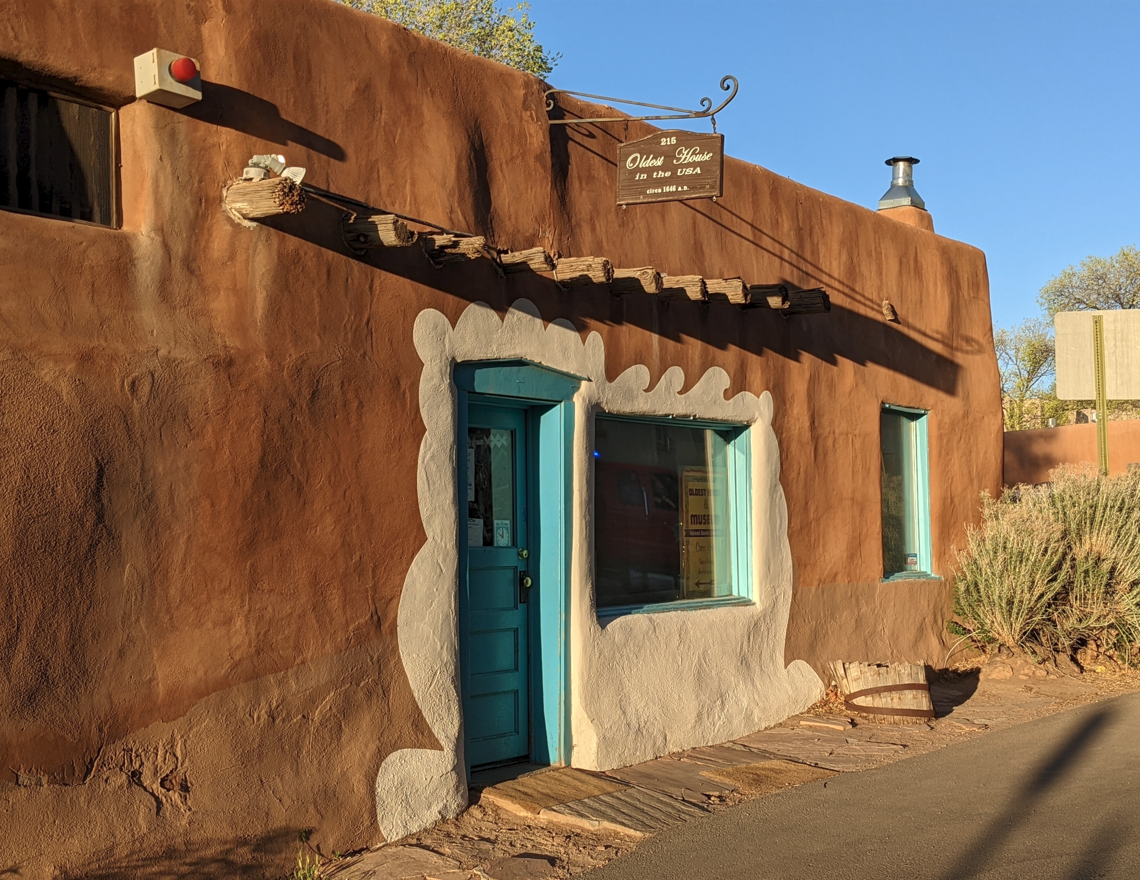
Our final stop was to locate AT&SF Locomotive 5030, which we found in Salvador Perez Park:
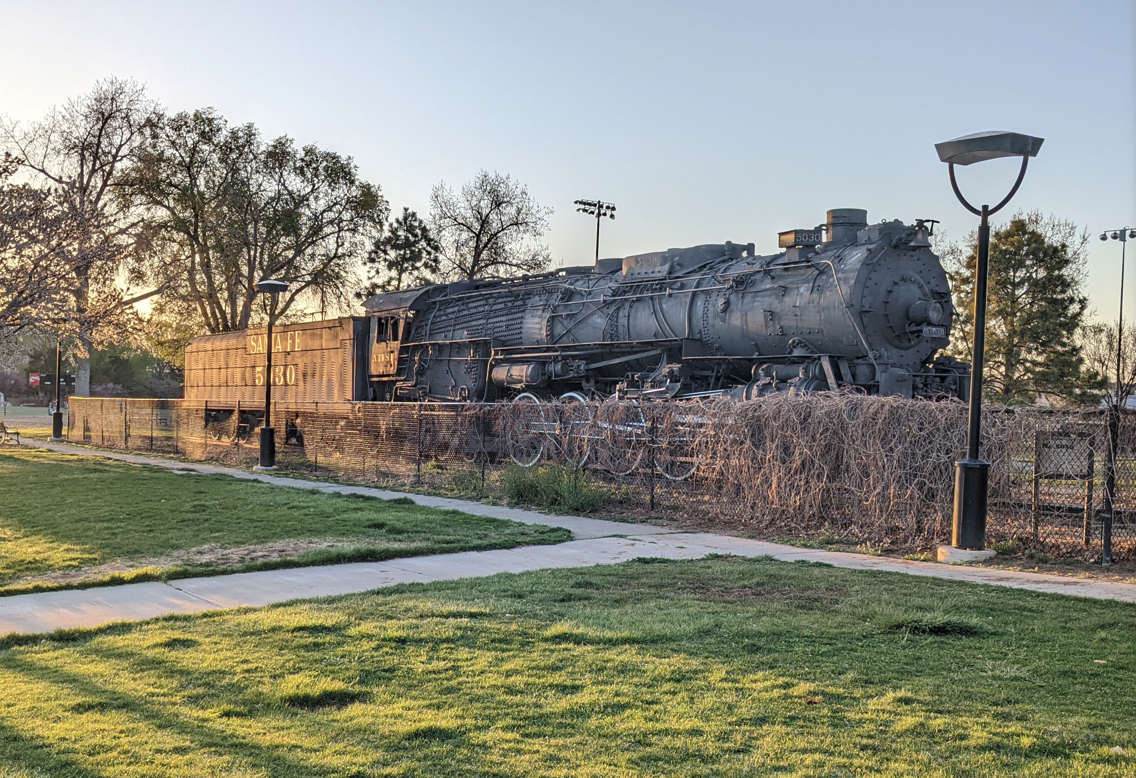
Done with this stop, I headed straight to the night’s motel, since the office closed at 8:00 pm. This was not a chain motel. When was the last time you ever checked into a motel that gave you a physical key? The Silver Saddle Motel was just such a place. Each room has a different southwestern theme to it.
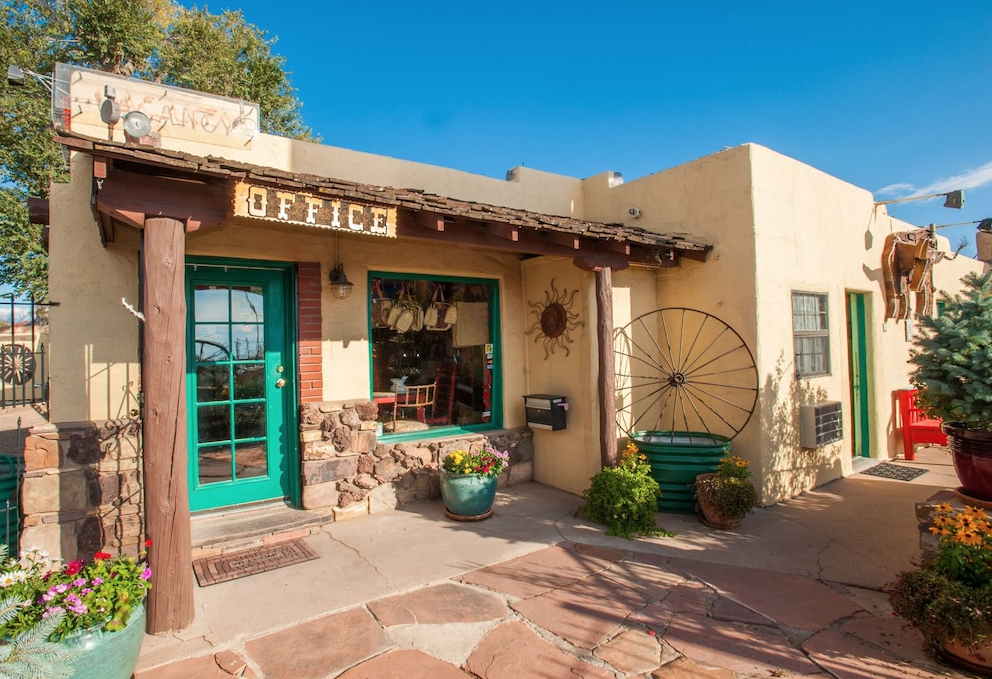
Our dinner get-together was at Los Potrillos, another Mexican restaurant, just down the street. Tales were told, dinner was devoured (nachos with shredded beef for me), and I headed back to the room to plot my route for the second day.
